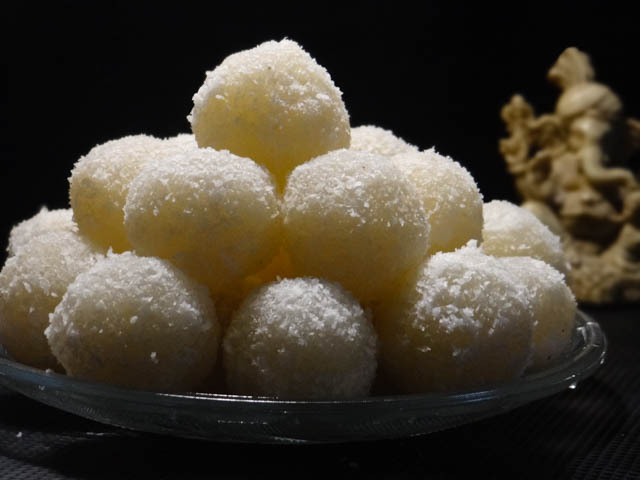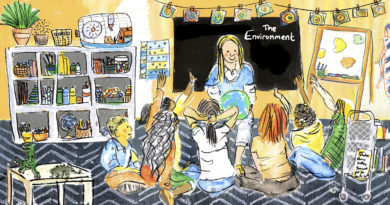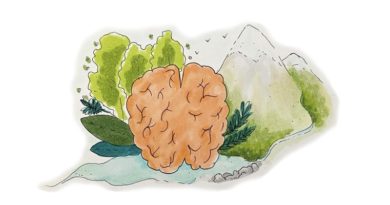No Added Sugar? Can Holiday Eating Be Healthy Eating?
 As childhood obesity soars in Europe, how on earth can loving mums replace traditional winter sweet treats and Christmas fare? English puddings, Swiss biscuits and all those wonderful pies are full of sugar.
As childhood obesity soars in Europe, how on earth can loving mums replace traditional winter sweet treats and Christmas fare? English puddings, Swiss biscuits and all those wonderful pies are full of sugar.
Make healthy baking a cultural experience for your children.
Assuming we all prefer to reduce rather than eliminate sugar and saturated fats completely, take the emphasis off the taste. Focus instead on the cultural associations. A huge amount of children’s pleasure comes from the special person with whom they make and bake, the enticement of the smells in the kitchen, being allowed to help with their own spoon, putting ingredients into the mixing bowl, and using a little measuring jug.
Talking about the process that leads to the finished product makes every ingredient interesting: where does this come from in the world, and how did it get to the shops? How do things change when they are mixed, and can you see anything of them once they are cooked? The vocabulary you use with little children who do not yet know the difference between words is marvellous to them – verbs: stirring, beating, soaking, mulching, mixing, bubbling, and whisking. And nouns: froth, gratings, shavings, chips, bits, and sprinkles; and adverbs: slowly, gradually, delicately, carefully, creatively, and beautifully.
Making and baking can be fun and educational! By allowing children of all ages to help with measuring, stirring, and beating, you teach them skills and foster their independence. You can put plastic material on the floor (available cut to size from rolls in IKEA and at Coop at Bellevue in Zurich). Once your creation is out of the oven, children from one year old upwards can enjoy sweet things, but they do not need to be given more than a few centimetres of a slice each to eat, and will even appreciate it more if you make special small individual pieces “just for them”!
Furthermore, create new traditional treats. It is hard to invent a completely new tradition with the same feeling. My top choices for sources of inspiration in 2015 come from searching for alternatives in world food recipe books and on websites, finding recipes such as cardamom saffron yogurt and mincemeat and apple jalousie. You can also find good gluten- or lactose-free recipes, like this chestnut and chocolate truffle cake or this key lime pie.
Don’t worry about losing traditions just because you’ve changed culinary treats! Find places to read about your cultural traditions and show children pictures of the stories, places and foods that go with each cultural tradition, so that children living abroad understand their meaning. Spending time curled up together with books from your home country can also become a special holiday treat. Feed little minds! Holidays do not have to revolve around food, no matter what our home cultures might dictate.
If you weaned your baby onto savoury vegetables rather than sweet fruit purées, and your child has not since developed a galloping taste for sugar, you can allow sweet things very occasionally. Provided there is no kindly figure offering them sweet food during their early childhood (curb that instinct – sometimes even grannies and shopkeepers need to know who is boss!) children may genuinely prefer savoury foods and ask for some other treat if you give them the choice. (Maybe limit the choices though…sushi was my son’s expensive request.) Try to resist your impulse to transmit our habits of eating from sweet-based food cultures or, in my case, a bygone era. There are other ways to inherit culture!
But what about indulgence and Christmas cheer, I hear you cry. Jelly and fruit sorbet gets my vote for making an exception to the rules in low-sugar households, along with homemade birthday cakes or other family traditions that are only celebrated with sweet food very occasionally. If they are made with the kids rather than bought from a shop, you can keep the “bad stuff” under control.
In contrast with the rest of the year when I am strict, nay, fanatical about healthy eating with kids, allow me to recommend that while keeping sugar to a minimum, I have to end with a favourite recipe from my original Indian culture and a couple of winter treats to accompany seasonal festivities by award-winning food writer Hattie Ellis.
Recipe: Coconut Ladoo
In India sweet treats have a different meaning to the warm and comforting chocolate we enjoy in western Europe. My mother, who grew up in India, explained to us how sweet things were used in religious ceremonies to symbolise other types of sweetness – wishing people a sweet life by keeping survival issues at bay, for example – and in households to wish hosts and guests wealth, as symbolised by rich butter and sugar combinations. In a society where life is much less reliable and predictable, these tokens and symbols were all that were within people’s control. We don’t need them now as much, and for the sake of tradition do not need them in great quantities. We can also adjust the recommended quantities if we make them ourselves. I make this recipe regularly now in November, ever since it was made for Indian New Year by one of our children’s mums (thanks, Bindu!) at Children First in Zurich, and it can be made into tiny or small delicious coconut balls called Ladoo. The condensed milk can be substituted in part, according to your taste, by soya cream or unsweetened nut butter:
2 cups grated coconut, fresh if possible (available in Aggarwal in Zurich and other stores)
¼ c. dairy powdered milk or whitener
200 g sweetened condensed milk
½ tbsp ghee or butter, melted
¼ tsp cardamon
1 tbsp desiccated coconut or dry coconut powder
Optional: roasted nuts and dried fruits
Heat butter or ghee in a heavy pan. Add grated coconut and stir for 4 mins on low heat.
Add the powdered and condensed milk, keep stirring until the mixture starts to leave the sides of the pan, about 6 – 8 minutes. Mix in the cardamon powder. Add any optional ingredients for texture and colour such as chopped dried fruit or toasted nuts. Turn off the heat and cool.
Grease your hands and make the mixture into small balls. Roll each in desiccated coconut.
The coconut balls (“Ladoo”) will keep in an airtight container at room temperature for a few days. Place in the fridge to keep them for longer.
Hattie Ellis creates recipes to suit every occasion. Her books are steeped in culture, and they focus on the people who produce wonderful healthy food, faithful to their origins at home and abroad. Here are two recipes to enjoy with your family.

Recipe: Winter Fruit Salad with Spiced Syrup, by Hattie Ellis
A bowl of winter fruit salad is useful to have in the fridge to add interest to weekday breakfast cereal or dress up for guests with crème fraîche and crisp biscuits.
My formula is one type of fresh fruit, one type of citrus fruit, one type of dried fruit and one type of nut, but vary as you like, playing with textures, colours and tastes.
You boil off the alcohol, so this fruit salad is suitable for children as well as adults, but to make a milder flavour, you can substitute the wine for water, or half and half.
Serves 6–8
6 small pears
3 clementines
18 ready-to-eat prunes
12 Brazil nuts
Spiced honey-wine syrup:
250ml white wine
3 tbsp honey
juice of 1 orange
juice of 1 lemon
½ tsp grated nutmeg
¼ tsp ground cinnamon
large pinch of ground ginger
Put the wine, honey, orange juice and lemon juice in a medium-sized pan with the spices. Bring to the boil and simmer for 5 minutes.
Meanwhile, quarter the pears – I don’t bother peeling them and if in a rush, leave the cores in too. Peel the clementines and cut into 2-cm slices, removing any pips.
Place the pears in the hot syrup and simmer gently for 15-20 minutes or so, until tender.
Turn off the heat. Add the clementines, prunes and nuts and stir everything together. Leave to cool, then put in fridge for at least a day before serving.
Recipe: Eve’s Pudding, by Hattie Ellis
A cold day; a grey day; a slight feeling of mid-week slump, or just plain appetite: all can be fixed by Eve. Throw some fruit into a pot, top with a roughish sponge (made quickest of all in a food processor), put the pud in the oven and pour yourself a glass of wine.
Serves 5–6
3 large apples
1 x 400 g tin of apricot halves or other fruit
1 tbsp lemon juice
1 tsp finely grated lemon zest
Topping
100 g butter at room temperature
80 g soft brown sugar
150 g self-raising flour
50 g ground almonds (or 50 g more flour)
a scant capful of almond essence (optional)
2 large eggs
2-3 tbsp milk
Set the oven to 200°C/Gas 6. Peel and core the apple and chop into small pieces. Place in a 1-litre dish with the apricot halves and their juice, plus the lemon juice and zest.
To make the topping, cream together the butter and sugar in a food processor then add rest of the ingredients, apart from the milk, and whiz briefly to mix. If making this by hand, cream the butter and sugar then add one egg at a time, alternating with the dry ingredients.
Add enough milk, pulsing or stirring as you go, to get a consistency that will fall off a spoon.
Spread the sponge mixture carefully on top of the fruit by dolloping it all over the top and then spreading it out into an even layer with the back of the spoon. Put the dish in the oven to bake for 40 minutes, or until the sponge is risen and golden and cooked all the way through.
Serve with cream, ice cream or, best of all, custard.
Winter Fruit Salad with Spiced Syrup and Eve’s Pudding reproduced by kind permission of the author. The One Pot Cook has just been published this year by Head of Zeus.
By Monica Shah
Monica is the founder and head of Children First in Zurich, an early childhood and first day school for bilingual and English-speaking children. At a day school, children eat lunch and have rest time before afternoon lessons. Monica is a big fan of food culture. She attributes this to her mother who always cooked wonderful Indian feasts that were vegetarian and sugar-free. As a working woman, she finds professional cooks to be a source of inspiration. Monica enjoys recipes that are low-sugar, free of preservatives and can be prepared in less than 30 minutes both at her school and at home.
The preschool menus at Children First are designed for nutritional balance and children’s developing taste buds by Monica and her team of committed staff and are posted on their website: www.childrenfirst.ch. The most popular recipes are posted on the site, like our Sweet Potato Soup.
Hattie Ellis lives in the U.K. and specialises in books that focus on the people and places that produce great food. She is the award-winning author of Spoonfuls of Honey (2014)
and The One Pot Cook (2015, Head of Zeus), available on Amazon.de for free delivery to Switzerland.
Illustration by Sharanya Mageshwaran
Sharanya Mageshwaran is a stay-at-home mom of a very naughty three-year-old who speaks better German than her mother does. Before moving to Zurich, Sharanya was a pharmaceutical research scientist in India. She loves painting and sketching with fauvist expressionist abstract themes. More of her artwork can be see here: http://somelightandcolor.blogspot.ch/
Photo credit for the coconut ladoo, Manish Ricku – Wikipedia



